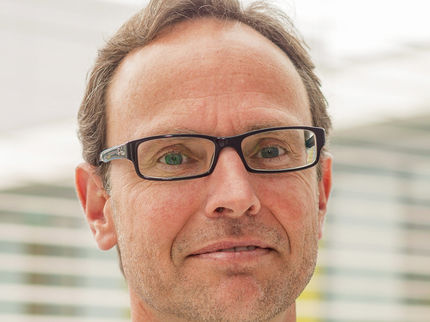New insights into how the most iconic reaction in organic chemistry really works
Diels and Alder won the Nobel; now UCLA's Kendall Houk makes the movie
In 1928, chemists Otto Diels and Kurt Alder first documented diene synthesis, a chemical reaction important for synthesizing many polymers, alkaloids and steroids. Their work on this mechanism, which came to be known as the Diels–Alder reaction, won them the 1950 Nobel Prize in chemistry.
Since then, the iconic reaction has become the most commonly used and studied mechanism in organic chemistry. But what happens during the reaction has never been entirely clear.
Now, Kendall N. Houk, UCLA's Saul Winstein Professor of Organic Chemistry, and colleagues report exactly how the Diels–Alder reaction occurs. Their research was published in the early online edition of the journal Proceedings of the National Academy of Sciences and will be published in an upcoming print edition.
"We have examined the molecular dynamics of the Diels–Alder reaction, which has become the most important reaction in synthesis, in detail to understand how it happens," said Houk, who is a member of the California NanoSystems Institute at UCLA.
Houk and his colleagues created a number of simulations — he calls them short movies — of molecules coming together and reacting.
"The idea," Houk said, "is to understand how the reaction happens — not just that A goes to B and B goes to C, but to actually follow how the bonds are forming and how the atoms are moving as these things come together. Using the massive computing power we have now, we get a degree of resolution of the mechanism that was not really possible before. It took a lot of computer time, but as a result, we now have unprecedented insight into how this reaction occurs."
Organic chemists have argued about this for years: If two bonds form during a reaction, do they form at the same time, or does one form first and then the other?
"We find that for the simplest Diels–Alder cycloaddition, it takes only about five femtoseconds on average between the formation of the two bonds; we consider that as occurring simultaneously," Houk said. (A femtosecond is approximately one millionth of one billionth of a second.)
"We have studied many different classes of reactions and come up with various kinds of rules for understanding why things happen the way they do," Houk said in the interview.
He and his colleagues — who include David Baker at the University of Washington, Charles Doubleday at Columbia University and Kersey Black at Claremont McKenna College — use computational methods to better understand basic chemical reactions and to design proteins and enzymes to catalyze chemical reactions. The combination of computational design and molecular biology "leads to a catalyst for whatever reaction is needed, if we can get this all to work properly," Houk said.
Describing his research to predict the structure of novel proteins that could catalyze specific chemical reactions, he said, "The idea is to design a catalyst for any reaction that's important for whatever reason — an important drug or a commercial product, for example."
Designing proteins and enzymes is difficult, but it can be successful.
"We've beaten really enormous odds but have really just scratched the surface of what is possible," Houk said. "Future developments in theory and computing power should make this work much better."
Black and Doubleday are co-authors with Houk on the new PNAS article, along with Peng Liu, a postdoctoral scholar in Houk's laboratory, and Lai Xu, who earned her Ph.D. in Houk's lab and is currently a postdoctoral scholar at Texas Tech University. (Liu, who also conducted his Ph.D. research in Houk's lab, was awarded a UCLA Chancellor's postdoctoral award last month.)
Houk has pioneered the use of computer calculations and simulations to study organic chemistry and to predict chemical reactivity. His research group has made predictions of new phenomena that have been verified experimentally, and he has made critical contributions to our understanding of how enzymes are able to selectively catalyze reactions.
In 2008, his research group used computer methods to create "designer enzymes" and to predict structures of proteins that can catalyze reactions which do not occur naturally — a major milestone in computational chemistry and protein engineering. Designer enzymes are likely to have applications for defense against biological warfare by deactivating pathogenic biological agents, and for creating more effective medications, Houk said.
He and his colleagues are currently working on computational methods to predict catalysts for reactions that will have important applications in industry and in therapies for fighting disease.
"Our work is theoretical and computational but is always tied to real phenomena," Houk said. "We first try to understand what is happening and then try to make predictions that experimentalists can test. The goal of our research is to use computational methods to design the arrangement of groups inside a protein to cause any desired reaction to occur."





























































